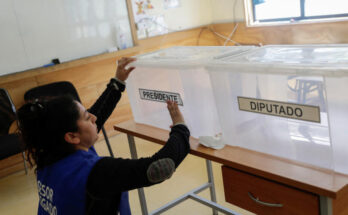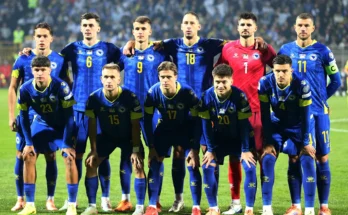The prominent insignia on the camouflage of the Kurdish fighters is unmistakable: a skull with crossed bones, another with a black pirate eye patch. The spinach berets and Kalashnikovs slung over their shoulders are Peshmerga, which means “ready to die” for Kurdistan, the autonomous region in Northern Iraq that resembles a country. The trenches dug to stop mine vehicle attacks launched like battering rams by the black flag of the Caliphate in the 2014-2017 war still wind like a long road more than a thousand kilometers long. Now the possible threat is Hashd al-Shaabi, a Shia militia. Il Giornale Frontline Academy takes aspiring war reporters and adventure readers on a trip to Iraq to Bashiqa, a sector of the Kurdish wall fortified by ocher-colored fortifications with towers and barbed wire. The goal is to bring reporting on the ground to life and tell the story of Iraq’s evolution between life of light and shadow. The peshmerga under the command of General Ahmed Nabi were completely under the control of the Academy’s youth and readers, who recorded videos and took photos of the fighters in the trenches. Apart from trying stand up, briefly describing the scene in front of the lens and even making a mini documentary which you can find on newspaper websites.
The movement of troops attracted the attention of the armored vehicles of the Popular Mobilization Army, which appeared a kilometer from us. “The Shia militias are like ISIS” explained one veteran, who described how ISIS’s kamikaze-rams attacked these defense lines to open the way. Paramilitary formations were formed to stop ISIS and today they are effectively integrated into Iraqi security forces. However, some groups, which take orders from Iran, the ayatollah’s neighbor, remain on the US international terrorism blacklist. In 2017, Shiite militias and the Iraqi army clashed with Kurds, driving them out of Kirkuk, a city rich in oil and gas.
The Peshmerga train with fire in the distance created between the rocks and explains that “Daesh (the Arabic name of the Islamic State) still has sleeper cells located in villages or caves in mountainous areas”.
During the trip, a warning was issued “to an ISIS lone wolf ready to blow itself up in the Christian neighborhood of Ankawa” in Erbil ahead of Iraq’s Nov. 9-11 national vote. Luckily nothing happened.
In Mosul, the proclaimed “capital” of the Caliphate, the old city remains a pile of rubble from the Iraqi army’s fierce fighting to free it from the black flag. Bullet casings, hand grenade containers, medicines, military jackets were left behind. When jihadist fighters run out of ammunition and realize that there is nothing more that can be done, they blow themselves up with explosive vests. On the walls of peeling and crumbling houses, there is no shortage of “safe” signs, the signature of engineers who have cleared the area of mine traps. A mural among the rubble provides an image: a little girl dressed in blue holding the hand of her teddy bear while walking among the bombs.
In Qaraqosh, the Christian heartland, on the Nineveh plains, the bell tower destroyed during the war with ISIS and the rebuilt churches of Saints Behnam and Sarah remain as reminders and memorials, as does the beautiful cathedral blackened by fire during the conflict. Pastor Wisham, who experienced the exodus of 150 thousand Christians in August 2014, forced to flee in the face of black flag lightning strikes towards Mosul, admitted in a resigned tone: “Before, 60 thousand Christians lived in Qaraqosh. After the war, half of them returned”. In Erbil, Chaldean bishop Bashar Matti Warda welcomed us to the cathedral and underlined: “In the last 50 years the percentage of Christians in the Middle East has decreased from 20% to less than 3%”. There are only 150,000 Christians left in Iraq and the majority, 80,000, live in Erbil, in Kurdistan, which is considered safer. In the afternoon, after returning to the hotel, it was time for a course for prospective war journalists. Video reports made during the battle of Mosul or Peshmerga battles along the defense lines are projected. There is no shortage of relaxing moments like smoking a hookah after dinner. And also touching like the Dohuk cafe which is filled with photos of Peshmerga who died defending Kurdistan including their weapons which were torn to pieces or cell phones, glasses, watches or wallets which became heirlooms.
The Frontline Academy journey also includes meetings with people who make us understand the reality on the ground, such as Niyaz Saleh Barzani, the right-hand man of the President of Kurdistan for external relations. Apart from the Italian consul, Tommaso Sansone, who was very helpful on the trip, as well as the representative of the Kurdish regional government in Italy, Rezan Kader. It is not only Christians who suffer from ISIS’s bloody occupation. The Yazidi minority was exterminated and 6 thousand girls or women were made into sexual slaves by cruel jihadists. Only half survived. Another “test” of the Academy and a highlight of the trip was a visit to a refugee camp on the outskirts of Dohuk. Ten thousand Yazidis still live under tents reinforced with bricks. “We want to return to Sinjar, the city where we fled ten years ago in the face of ISIS” complain the women, who show photos of their relatives who are still missing today on their mobile phones. Kurds fought hard to liberate Sinjar, but the Yazidi “capital” is in federal territory and the refugees have become the subject of conflict between Kurdistan and Baghdad.
The hospitality of the Kurdish people is legendary and to immerse yourself in the local realities and traditions, the best way is to have dinner at home sitting on the floor with your legs crossed in front of an array of delicious foods to eat with your hands.
The head of this family still remembers very well the dictatorship of Saddam Hussein who was overthrown due to the American invasion, which opened a Pandora’s box of terrorism and the influence of Iran’s ayatollahs. A short sentence was enough for him to make everything clear: “Saddam is the devil, but even now there are worse.”



